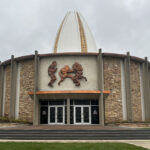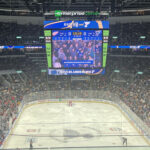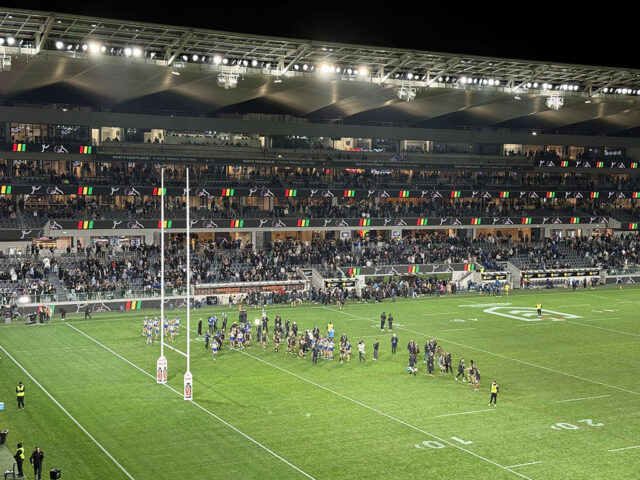
Whether you’re a huge fan of rugby league or simply someone looking to incorporate sports into your travels, the chance to watch an NRL match might be on your radar when visiting Australia.
I definitely fell into the latter category. When preparing for my first visit Down Under, I certainly had the NRL — which stands for National Rugby League — in mind, but more so out of curiosity. I am not much of a follower of rugby in any form, which meant that I had to do a lot of research into not only the league and its teams but the nature and structure of the game itself.
That might seem like a lot of work for what boiled down to an optional travel experience in an epic, bucket-list trip. But after having seen the NRL in action, I can tell you that it’s an absolutely worthwhile experience to have in Australia.
And for me, it was a wonderful introduction into a sports culture that has plenty of similarities, as well as some noticeable differences, to what you’ll find in North America.
Here’s my first-hand experience of watching rugby league in Australia. You can also watch the video below, which is posted on the Itinerant Fan YouTube channel — check it out and consider subscribing if you want to see more sports and travel video content.
The rugby league landscape in Australia
The NRL consists of 17 teams, 16 in Australia plus another in New Zealand. Like most of Australia’s other team sports, this league is structured in a similar fashion to major European soccer leagues, though some of the nomenclature is different: A week of gameplay is referred to as a “round,” the schedule is known as the “draw,” and the table (or standings) is called the “ladder.”
Each season typically spans from March to September, essentially spanning from fall to early spring in Australia.
Because my visit was coming in winter, I knew I’d have plenty of opportunities to see sports. And because I’d be spending time in both Sydney and Melbourne, both of which have numerous athletic clubs in the pro leagues, I figured I’d have multiple opportunities to catch a match over a two-week span. After all, nine of the NRL’s current clubs are located in the Sydney region.
However, it turned out that only one match would be played during that time in a place that was in close enough proximity for me to attend: The Penrith Panthers were hosting the Canterbury-Bankstown Bulldogs at CommBank Stadium in Parramatta, a suburb located about 20 miles west of central Sydney.
What’s more, the match was being played on the same night as my arrival in Australia after a nonstop, 15-hour flight from the United States.
But because it was the only chance I had, I decided I would attend the match, jet lag be damned.
As it turned out, convenience set me up for a terrific matchup. The Panthers were the four-time NRL premiers, meaning they’ve won the league championship each of the previous four seasons. Meanwhile, the Bulldogs entered this match at the top of the NRL ladder.
I didn’t know either of these things until the day of the match, but regardless, I had a feeling I was in for a treat.
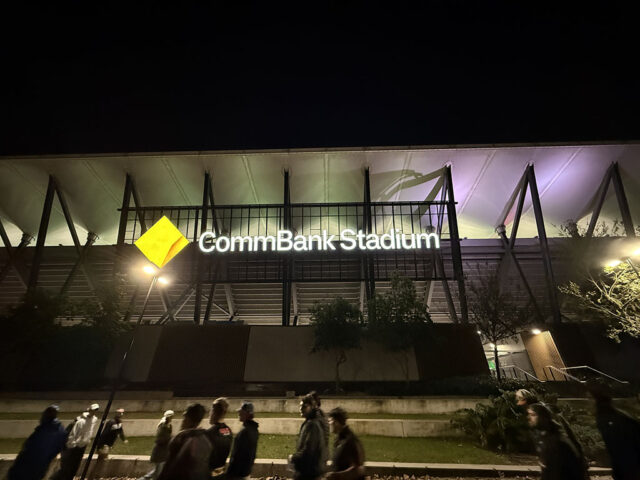
Logistics of attending the match
I bought tickets for this match about a month prior on Ticketek, which is basically the Australian version of Ticketmaster in that most major events Down Under, from sports to concerts, can be found on this platform.
Like usual when trying to score tickets for international events — see our guide to buying Premier League tickets for evidence of this — I looked to purchase as soon as possible. But it turned out I didn’t have to worry, because when I accessed the ticket portal, seats were plentiful. (And as I discovered when game night finally arrived, the stadium would be only about two-thirds full.)
One thing I also discovered is that tickets are often discounted for minors as a way of encouraging more children to attend sporting events in Australia. This was a welcome surprise to me, as I’d be bringing my young daughter to the match.
Once we arrived in Australia, my attention turned to getting to the match — no small feat considering I had only been in Sydney a few hours by the time I began navigating the city’s train network to get to a suburb many outside Australia haven’t heard of.
Parramatta, though, is a major suburb with plenty of infrastructure for residents and workers alike — as well as some 30,000 people looking to attend an event at CommBank Stadium. It’s served by a train line, known as the T1, that travels from central Sydney to the western suburbs.
Getting to Parramatta took about 25 minutes on this train, after which we boarded a light rail train that took us the additional mile or so to get to the stadium.
CommBank Stadium, by the way, was not the Penrith Panthers’ usual stadium. Penrith is a suburb located twice as far west of central Sydney as Parramatta; it’s also reachable via the T1 train line, but it’s one of the last towns travelers will pass through before leaving the Sydney metro area and into the Blue Mountains.
Penrith’s stadium was under renovation, though, forcing the Panthers to play the 2025 season at CommBank Stadium. This distance was a likely factor in the stadium not being full for a Thursday-night match, but it made it much more convenient for two jet-lagged travelers from the U.S. to take in a rugby league match on their first night in Australia.
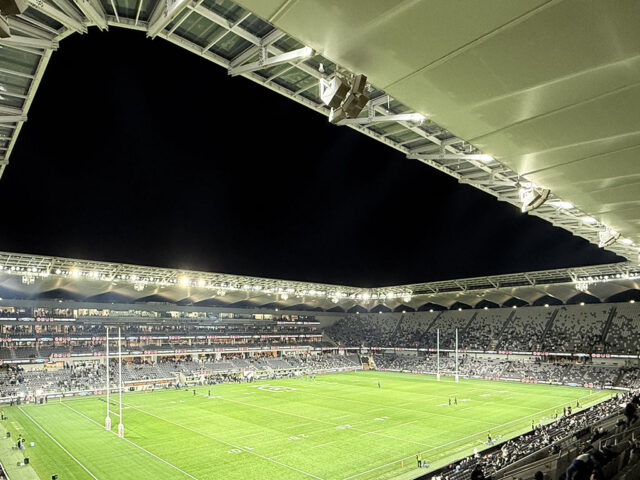
Comparing rugby league to American football
Because I admittedly didn’t know much about rugby league coming in, I found it helpful to make comparisons to American football, a sport in which I am intimately familiar.
And indeed, there’s a lot of similarities. While the field measurements aren’t quite the same, both games are played on a rectangular field with yard/meter markers, end zones and goal posts. In both games, teams can score the maximum amount of points by advancing the ball into the end zone — but in rugby league, it’s called a “try zone” and the scoring play is called a try.
Teams can “settle” for points by kicking the ball through the uprights — this is known as a drop goal.
Beyond that, there are actions similar to kickoffs, punts, tackles and snaps, but one thing you won’t find in this game is the forward pass.
Further muddying the waters for rugby newbies is that there are differences in rules between rugby union, the style played internationally, and in rugby league, played by professional leagues.
I can’t say I understood all the rules after just one match, but I do think that as the match went on I gained a greater understanding of what teams and players did and why, which made the experience more enjoyable.
I was also struck by how much the game presentation resembled American sports — with pregame light shows, on-screen intros, cheerleaders, and even the crowd singing along to “Sweet Caroline.” If I closed my eyes at that moment, I might’ve felt I was at Fenway Park.
One thing I picked up on very quickly is that the NRL’s rules are designed to keep play moving at a fast pace. As soon as one play ends, another one begins in the form of a player using his foot to roll the ball back to a teammate, an action known as “playing the ball.”
That constant motion made for a thrilling spectator experience. The back-and-forth tension kept us on the edge of our seats — even if the score was lower than I anticipated.
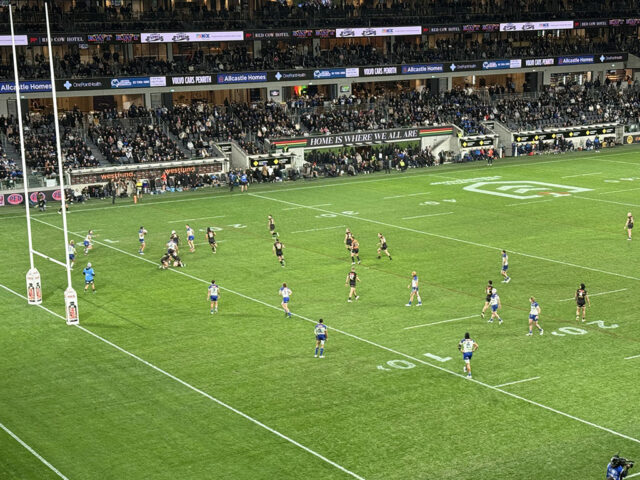
A match worth traveling to see
The seats I chose for this match wound up being among fans of the visiting Bulldogs, who mostly occupied the sections at the south end of the stadium. While both teams’ supporters were boisterous, I got a first-hand glimpse of the Bulldogs fans’ chants and customs.
Fans of both teams were generally intermingled — no segregated supporter sections like in British soccer — but I never got the sense that any one team’s fans were bothered by the nearby presence of opposing supporters.
This would also bear out in later events I attended during my time in Australia, a somewhat refreshing change to the emotionally charged atmospheres I often see at other sporting events in America and around the world.
The final score of this match was 8-6, and if someone had told me beforehand this would be the case, I would certainly have wondered if I was in for a snoozefest. But it turned out that this game was a nail-biter filled with strategy, capped by a wonderfully dramatic ending.
The Bulldogs, trailing by two points on their final possession, made a last-ditch attempt to score a try and steal the win. But the Panthers defense held strong and tackled the Bulldogs player with the ball just a couple meters short of the try zone on the final play to seal the win — a moment that reminded me of a game-winning goal-line stand in American football.
The next morning, I checked the local headlines to see what was being said about the match. Headlines that used terms like “all-time thriller” and “win for the ages” confirmed what I’d felt in the moment.
Looking back, the jet lag, travel logistics, and worry about investing money and time to watch an unfamiliar sport were all well worth it. Getting to experience a live NRL match, at a stadium halfway around the world, was the perfect way to dive into the sports culture in Australia.

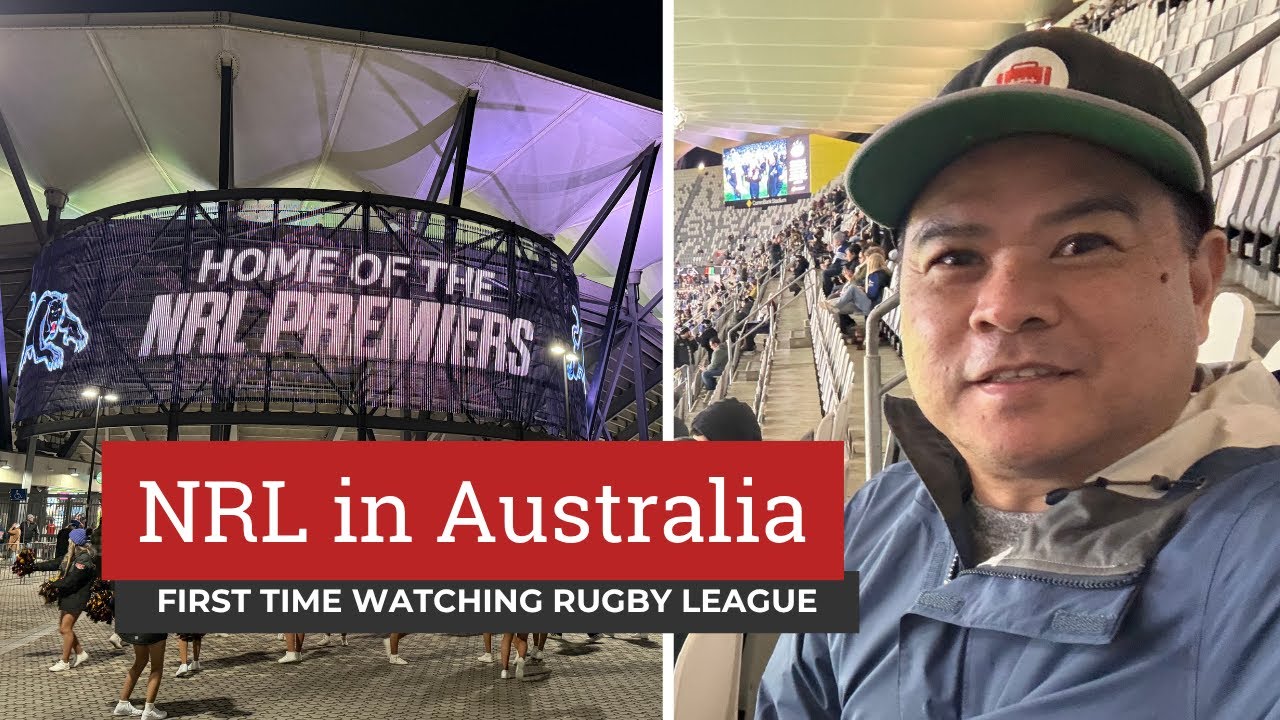
 Edward de la Fuente | Itinerant Fan
Edward de la Fuente | Itinerant Fan